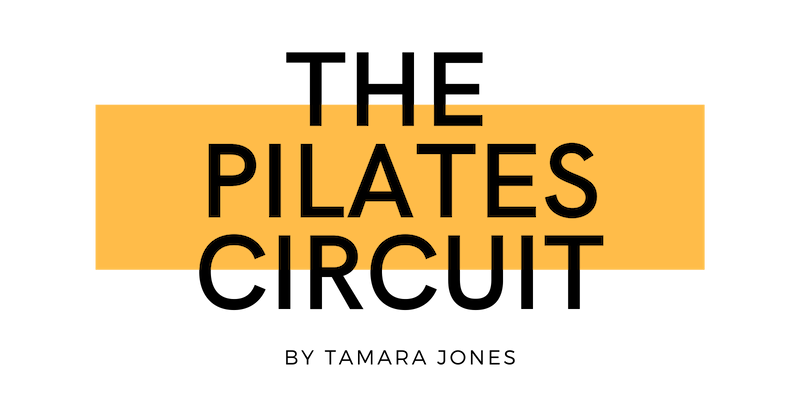What Are The 6 Principles Of Pilates?
To fully understand Pilates, it's essential to know the 6 principles of Pilates that form its foundation. These principles guide every movement, enhancing body awareness and ensuring effective workouts.
In this article, we’ll explore these core principles and their role in a fulfilling Pilates experience.
What Are The Principles of Pilates?
The principles of Pilates are the heart of this exercise method. They help you get better results while fostering a deeper connection with your body. They highlight the importance of proper form, control, and mindfulness as you move through your practice.
By embracing these principles, you can make your workouts more effective and create a balanced routine that minimizes the risk of injury.
How These Core Principles Shape Pilates Training
Focusing on the core principles will create a strong foundation for future workouts on the mat or the reformer.
These principles encourage mindfulness, precision, and control, ultimately improving strength, flexibility, and overall body awareness.
The 6 Principles of Pilates
#1) Concentration
Concentration is all about focusing your mind on each movement.
This heightened awareness helps you engage the right muscles and maintain proper form, making your practice more effective.
#2) Control
Control emphasizes executing movements with precision and stability.
By maintaining control, you can enhance your strength and prevent injuries, ensuring a safer workout.
#3) Centering
Centering refers to engaging your core, which includes your abdominal muscles, lower back, hips, and glutes.
Focusing on your center provides stability and supports better overall movement.
#4) Flow
Flow encourages smooth, continuous transitions between exercises.
This principle enhances your workout experience, keeps your body engaged, and promotes a sense of rhythm in your practice.
#5) Precision
Precision highlights the importance of accuracy in your movements.
Paying attention to alignment and form helps you target the right muscle groups and maximizes the effectiveness of each exercise.
#6) Breath
Breath is a crucial component of Pilates. It facilitates movement and promotes relaxation.
Proper breathing techniques can enhance focus and endurance, making your practice more enjoyable and effective.
How the 6 Principles Work Together to Improve Your Pilates Practice
By integrating concentration, control, centering, flow, precision, and breath, you create a more effective and balanced workout.
Integrating the Principles for a Balanced and Effective Workout
Integrating these principles can significantly enhance your workout experience. Here’s how to apply each principle for a more effective routine:
Concentration: Focus fully on your movements to strengthen the mind-body connection.
Control: Execute each exercise with precision to maintain stability and prevent injury.
Centering: Engage your core muscles to provide support throughout your workout.
Flow: Move smoothly from one exercise to the next to create a seamless rhythm.
Precision: Pay attention to your form and alignment to target the right muscle groups.
Breath: Use your breath to guide your movements.
Applying the 6 Principles of Pilates in Everyday Life
You can easily incorporate the 6 principles of Pilates into your daily routine to enhance your well-being and movement.
How These Principles Can Enhance Your Overall Well-Being and Fitness
The benefits of Pilates extend well beyond the studio, positively impacting your daily life. Here are some ways these principles can enhance your overall well-being:
Concentration: Boosts focus and mindfulness, helping to alleviate stress.
Control: Improves stability, making daily movements safer and more efficient.
Centering: Promotes core strength, supporting better posture and alignment.
Flow: Makes everyday tasks feel more effortless and rhythmic.
Precision: Ensures accurate movement execution, reducing the risk of injury.
Breath: Enhances relaxation and endurance, contributing to a healthier lifestyle.
This holistic approach to movement can help you maintain a more balanced lifestyle. Ready to take the next step? Sign up for an intro session on the reformer today and see how Pilates can transform your fitness journey!
FAQs
-
Pilates is a low-impact exercise method that focuses on strengthening the core muscles, improving flexibility, and enhancing overall body awareness and control. Pilates exercises are performed with precise movements and controlled breathing patterns, emphasizing quality of movement over quantity.
Some benefits of Pilates include improved posture, increased muscle tone and strength, enhanced flexibility, and reduced risk of injury.
When you know how to move slowly and from the core, you learn how to control everything else.
-
Hiring a private Pilates instructor offers personalized attention, tailored workouts, and focused guidance. This leads to faster progress and reduced risk of injury. Working with a private instructor also allows you to address specific goals and receive immediate feedback.
When you take group classes, you get the benefit of movement but often not the progression and programming of working with a private instructor. By focusing on form and weekly progressions, you’ll achieve your goals and see a difference a lot faster with a private trainer.
-
For maximum results, aim for 2-3 sessions per week. Consistency is key to improving strength, flexibility, and overall fitness. However, always listen to your body and allow for adequate rest and recovery between sessions.
You’ll see less is more when working out. 2-3 Strategic sessions each week will get you a lot further than random Group Classes every day. We also encourage a focus on rest and recovery between sessions - deep sleep, healthy food, and rest.
Meet Tamara – Your Pilates Expert
Hi! I’m Tamara, a Certified Pilates Instructor and founder of The Pilates Circuit in NYC. With 9+ years of experience, I specialize in results-driven, athletic Pilates to improve posture, core strength, and overall wellness. Whether you're recovering from diastasis recti or leveling up your fitness, I’m here to guide you every step of the way!
Find us on Instagram:


